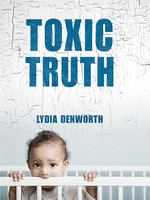
Park Slope's Lydia Denworth is the author of Toxic Truth: A Scientist, A Doctor and the Battle Over Lead, the first book to tell the incredible story of the two men behind the bitter thirty-year fight to protect children from lead.
Denworth is a writer and editor based in New York City. A former reporter for Newsweek and bureau chief for People, her writing on science, education and social issues has appeared in the New York Times, Redbook, Health and other publications.
In
2009, she'll be teaching in the journalism department at Long Island
University. She serves on the boards of trustees of the Berkeley
Carroll School and the Oliver Program, which expands the educational
opportunities of black and Latino students.She lives in Park Slope Brooklyn with her husband and three sons.
Denworth is having a book launch party and talk at the Old Stone House (in
conjunction with the Community Bookstore) on Tuesday March 3rd at 7
p.m.There will be books for sale and signing.
This list of Seven Surprising (and Alarming) Things You Don't Know About
the History of Lead was prepared for the readers of OTBKB by Denworth.
1) Australian doctors first discovered the link between lead
paint and childhood lead poisoning in 1904.
2) Twelve countries banned lead paint from interior use in the
1920s. At the same time in the United States, National Lead was using the Dutch
Boy to market the product to children and winning advertising awards for the
campaign.
3) Clair Patterson invented the ultra-clean lab in the 1950s
because he figured out that his laboratory was so contaminated with lead—in the
water, the air, the equipment—that he couldn’t get the accurate measurements of
lead isotopes he needed to determine the age of the Earth.
4) The man who invented leaded gasoline, Thomas Midgley, had a
bad case of lead poisoning. So did his assistant.
5) When pediatrician Herb Needleman treated his first
lead-poisoned child in 1957, many doctors still couldn’t recognize a case of
acute lead poisoning, even when the patient was nearly comatose or having
convulsions.
6) Medical truths change. The industry researcher who was
considered the preeminent authority on lead in the first half of the 20th
century was convinced everyone was fine below a blood lead level of 80
micrograms per deciliter of blood. Today the “level of concern” is 10, but the
CDC acknowledges that there is no safe level of lead for children.
7) Millions of toys were recalled because of lead paint hazard
in 2007. The U.S. government published its first brochure on the dangers of
lead paint in toys in the 1930s.
She will be giving a reading and talk at the Old Stone House (in
conjunction with the Community Bookstore) on Tuesday March 3rd at 7
p.m.There will be books for sale and signing.
